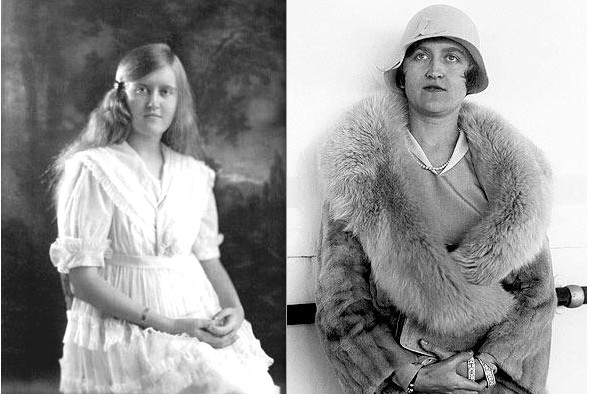Death of Eccentric, 104-Year-Old Lady Leads to a Museum for her Art and Books
- by Michael Stillman

Huguette Clark in her teens, and her last known photograph, taken over 80 years ago.
In 1988, Huguette apparently determined she needed to be in a hospital, although there does not appear to have been a medical emergency, just a certain frailness resulting from old age. It appears she simply may have been more comfortable in the small but safer surroundings. She never returned home. She chose to stay in various hospital rooms, living under assumed names, with one or two caretaker-friends who would visit, and part of her collection of dolls. She died in such a room in May, no children, all connections to family long ago abandoned. Her will specifically denied any inheritances going to family. Other than charitable donations, she left $30 million-plus to the one surviving long-term caretaker/friend and relatively small amounts to her lawyer and accountant. Despite the extreme reclusiveness and lack of ties to family, it should be noted that those who knew Huguette Clark, particularly families of various caretaker/companions, speak of her as a kind, generous and caring woman. She just, for whatever reason, could not bear to be seen by others.
Of course, when someone dies with a $400 million fortune and no visible heirs, there is bound to be some controversy. Even before her death there were questions about the isolation and care of Ms. Clark. Her lawyer and accountant received comparatively modest bequests ($500,000 each), but may stand to make much more managing her estate and foundation. It is unknown at this point whether this investigation will lead anywhere or whether the distant relatives will make claims. Those relatives, descendants of half-siblings, long denied contact with Ms. Clark, may believe her representatives were keeping them from her, but whether they were encouraging isolation, or just acquiescing to the wishes of an eccentric, shy old lady is anyone's guess. Huguette certainly could have given today's generation a wonderful, personal account of long ago history, but sadly, for whatever reason, she chose not.
The foundation Ms. Clark created for her estate, art and books is just a vague entity at this point. She did not give specific directions as to what it should become, just general guidelines. That will surely take years to unfold, but once it does, the world will be better off for Huguette Clark's generosity in passing on the remains of one of America's great 19th century fortunes.